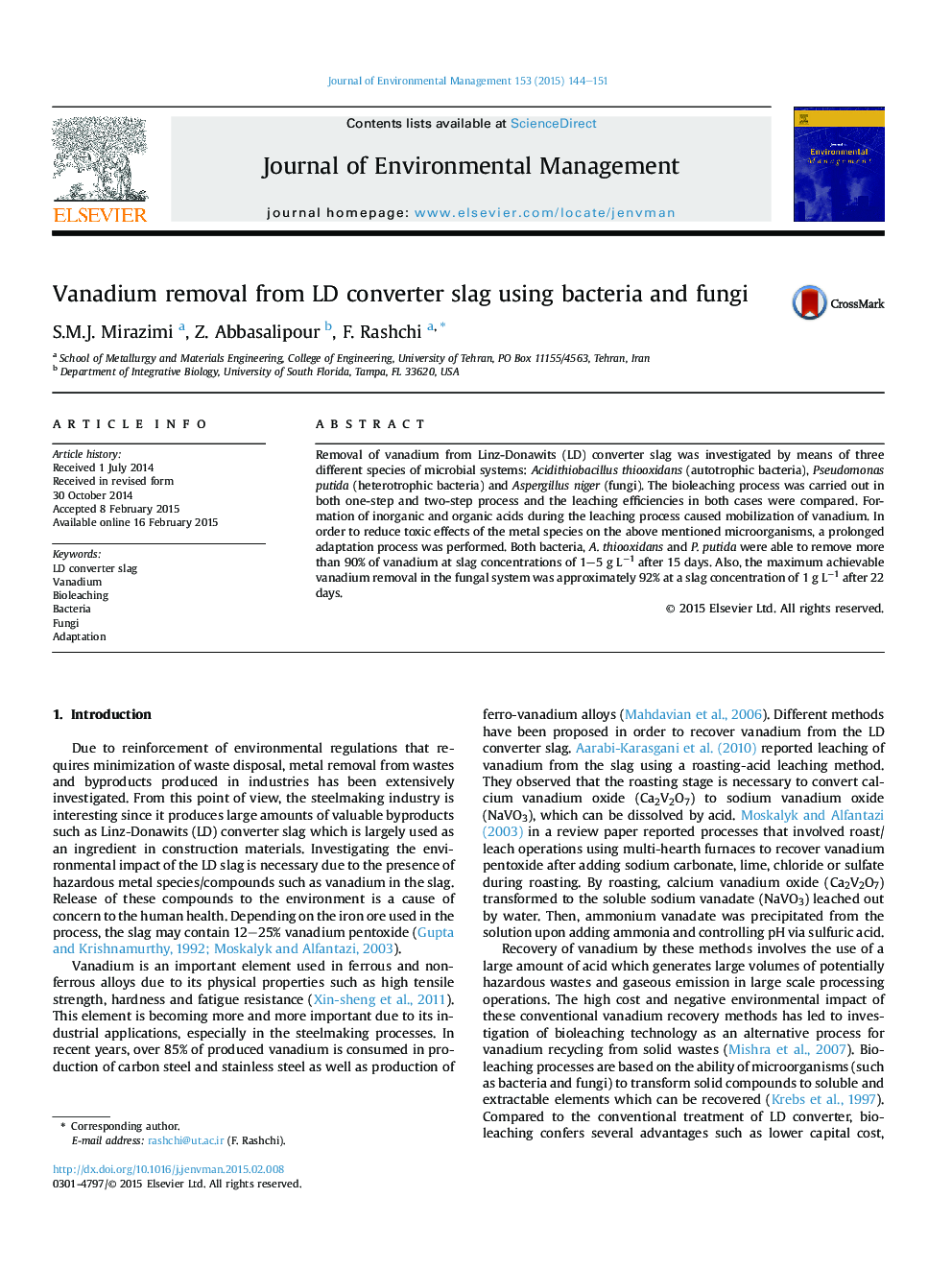| Article ID | Journal | Published Year | Pages | File Type |
|---|---|---|---|---|
| 1055631 | Journal of Environmental Management | 2015 | 8 Pages |
•Bioleaching potential of two bacteria and a fungus towards LD slag were investigated.•One and two-step bioleaching were investigated and their efficiencies were compared.•Adaptation process was performed to reduce the toxic effects on the microorganism.•More than 90% and 80% of vanadium was removed by bacteria and fungus, respectively.
Removal of vanadium from Linz-Donawits (LD) converter slag was investigated by means of three different species of microbial systems: Acidithiobacillus thiooxidans (autotrophic bacteria), Pseudomonas putida (heterotrophic bacteria) and Aspergillus niger (fungi). The bioleaching process was carried out in both one-step and two-step process and the leaching efficiencies in both cases were compared. Formation of inorganic and organic acids during the leaching process caused mobilization of vanadium. In order to reduce toxic effects of the metal species on the above mentioned microorganisms, a prolonged adaptation process was performed. Both bacteria, A. thiooxidans and P. putida were able to remove more than 90% of vanadium at slag concentrations of 1–5 g L−1 after 15 days. Also, the maximum achievable vanadium removal in the fungal system was approximately 92% at a slag concentration of 1 g L−1 after 22 days.
